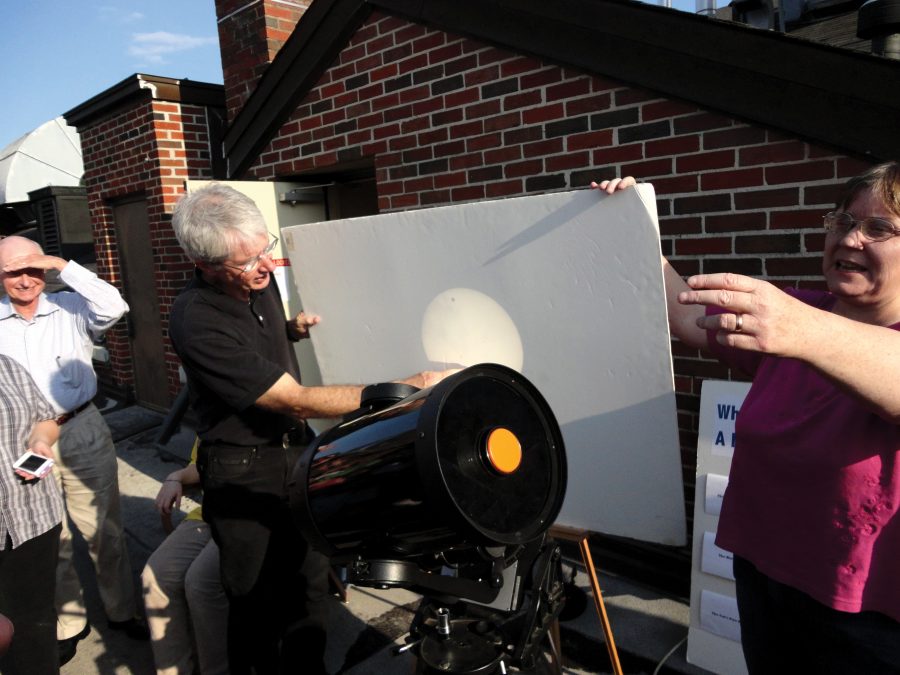Venus won’t move across the face of the Sun again for another 105 years, and on June 5, all astronomy professor William Keel wanted was for the typical Alabama late-afternoon cumulus clouds to clear.
“All we’ve got to do is be able to see the sun,” Keel said with a laugh. “Is that too much to ask?”
The viewing Keel organized for students didn’t last long. A large gathering of people waited on the roof of Gallalee Hall with three telescopes, several pairs of viewing glasses and a “sunspotter,” a telescopic device designed for viewing solar phenomena.
Ultimately, though, the group got to see the once-in-a-lifetime event.
The wait for the clouds to clear lasted approximately twenty minutes. The sun appeared shortly, only to vanish again behind the clouds. Its appearances were brief, but, in the eyes of the spectators, well worth it.
“I thought it would be cool to come out and get a hands-on opportunity,” Christy Holland said. She brought her two daughters, Carlee and Jacey, to see the passing of Venus. Holland, who homeschools her children, thought that the viewing would serve as an excellent educational opportunity, as well as a memory that will make a great story.
“It will be something neat to talk to their kids about,” she said. “Really, it’s a once in a lifetime opportunity.”
“It was really cool, but it was just so small,” Carlee said. Jaycee added that since Venus is Earth’s sister planet, the earth itself is equally small.
The passing of Venus between Earth and the sun happens fairly frequently, but the planet usually – 98 times out of 100 – passes either to the north or south of the sun, Keel said. Before the evening of June 5, the event had occurred in 2004 and 1882.
“Not many scientific events are predictable and yet happen this infrequently,” Keel said. “There have only been seven that people have known were coming.”
While they occur on a monthly basis during the school year, public viewings with the department of astronomy are only held on special occasions during the summer because of interest level and the late hour of sunsets.
“Unless a bright comet appears from nowhere or something, this should be the only one,” Keel said.







